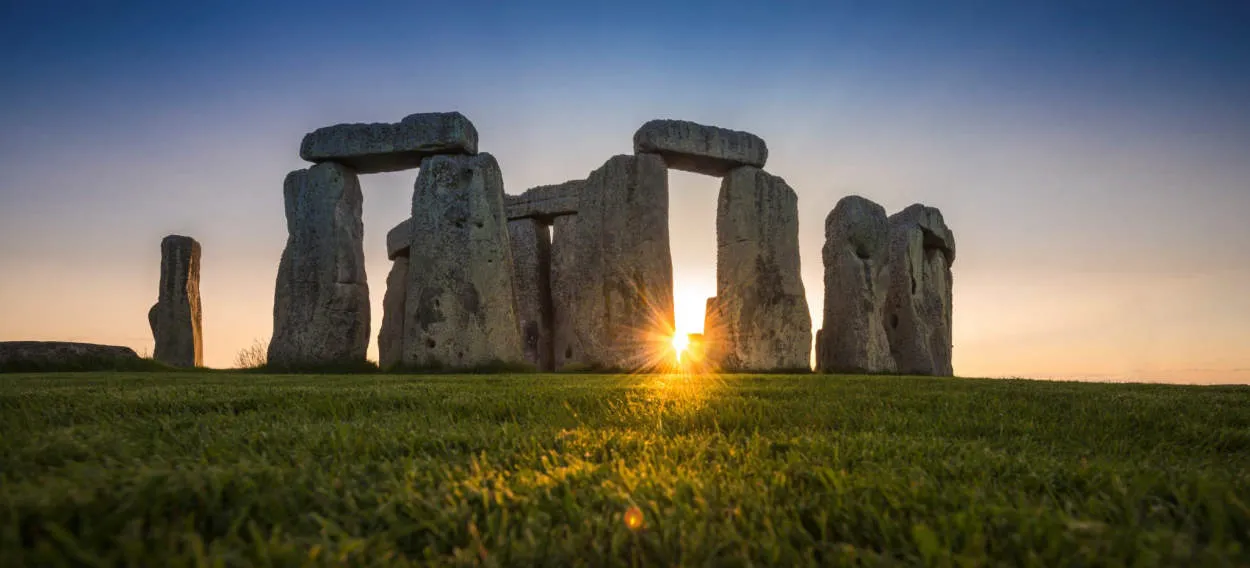Stonehenge, the iconic prehistoric monument in England, has puzzled archaeologists and historians for centuries. Its massive stones, arranged in a unique circular formation, continue to hold the secrets of its purpose and construction. Join us as we embark on a journey to uncover the mysteries surrounding Stonehenge and delve into its fascinating history.
The Ancient Origins of Stonehenge
Stonehenge, a world-renowned ancient monument located in England, continues to fascinate and perplex archaeologists and historians alike. This iconic stone circle holds many mysteries that have yet to be fully unraveled.
Believed to have been constructed between 3000 and 2000 BCE during the Neolithic period, Stonehenge stands as a testament to the ingenuity and skill of its builders. The monument consists of massive standing stones arranged in a circular pattern, with some weighing more than 25 tons. How these stones were brought to the site and erected remains a subject of debate.
One prevailing theory suggests that Stonehenge was used for astronomical observations and served as a primitive astronomical calendar. The alignment of the stones with the movements of the sun and moon during significant celestial events indicates the builders’ deep understanding of celestial mechanics.
Another theory proposes that Stonehenge was a sacred site for religious ceremonies and rituals. The careful arrangement of the stones and the presence of burial mounds nearby suggest that it held great spiritual importance to the people of that time.
Despite numerous studies and excavations, the purpose of Stonehenge continues to elude us. The monument’s significance and the complex motives behind its creation remain a mystery. However, ongoing research and technological advancements in archaeology provide hope for further discoveries in the future.
Theories and Speculations Surrounding Stonehenge
Stonehenge, a prehistoric monument in Wiltshire, England, has fascinated researchers and visitors for centuries. Its purpose and construction have sparked numerous theories and speculations, but the true nature of this ancient structure remains a mystery.
One popular theory suggests that Stonehenge was used as an astronomical observatory. The alignment of certain stones with celestial bodies, such as the summer solstice sunrise, supports this idea. It is believed that the monument played a significant role in observing and marking important celestial events.
Another hypothesis proposes Stonehenge as a burial site. Human remains found in and around the area suggest that it could have been a place of final resting for important individuals. The arrangement of the stones and their symbolism might have served as a memorial or a way to connect the living with the deceased.
Some believe that Stonehenge was a place of healing and spiritual rituals. The stone circles and the unique energy of the area may have been used for ceremonies, meditation, and connecting with the supernatural. The monument’s location on a ley line, a supposed alignment of powerful and mystical energy, strengthens this belief.
Despite these theories, the exact purpose of Stonehenge remains uncertain. The monument continues to captivate both researchers and the general public, inviting further speculation and exploration. Perhaps future discoveries and advancements in technology will shed light on the enigmatic mysteries that surround this ancient marvel.
Visiting and Exploring the Stonehenge Site
Stonehenge is a world-famous prehistoric monument located in Wiltshire, England. As one of the most iconic sites in the world, it continues to capture the imagination of people from all walks of life. Visiting this enigmatic stone circle offers a unique opportunity to delve into the mysteries surrounding its construction and purpose.
When you first set eyes on Stonehenge, you can’t help but be in awe of its grandeur. The massive stones, some weighing over 25 tons, standing in perfect alignment are a testament to the ingenuity and craftsmanship of the ancient builders. Walking around the site, you will be immediately immersed in its intriguing atmosphere.
While the exact purpose of Stonehenge remains shrouded in mystery, many theories have been proposed. Some believe it was a ancient calendar, others suggest it served as a burial ground or a place for ancient rituals. There are even theories connecting it to celestial alignments and spiritual practices.
During your visit, be sure to explore the nearby visitor center, offering a wealth of information about Stonehenge and its significance. The interactive displays and exhibits provide insights into the history, theories, and archaeological finds associated with the site.
A visit to Stonehenge is not complete without joining a guided tour. Professional guides can enhance your experience by sharing fascinating facts and details about the site’s history and significance. They will guide you through the different stages of Stonehenge’s construction and explain the various theories surrounding its purpose.
As you wander around the site, take a moment to appreciate the natural beauty of the surrounding landscape. The rolling hills and open fields add to the mystical ambiance of Stonehenge, creating a truly memorable experience.
Whether you are a history enthusiast, a spiritual seeker, or simply curious about ancient mysteries, visiting and exploring Stonehenge will undoubtedly leave you with a sense of wonder and fascination. It is a remarkable site that continues to captivate and intrigue visitors from around the globe.
Conclusion
Exploring the mysteries of Stonehenge has been a fascinating journey. Despite numerous theories, the purpose and construction techniques of this ancient monument remain enigmatic. However, through ongoing research and scientific advancements, new discoveries continue to shed light on its significance, leaving us in awe of the ancient civilizations that created this remarkable heritage.




